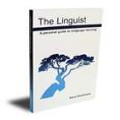The first thing to do is to listen. My experience with learning Chinese, Japanese and other languages has confirmed to me that the best way to improve fluency and comprehension is the seemingly passive activity of listening over and over to understandable content. This activity allows you to expand your language skills in a non-stressful way. Listening is not just for beginners. I still listen to my favourite tapes in languages that I already speak well: in my car, while walking or jogging, or doing chores around the house. You can always improve pronunciation, rhythm, vocabulary and fluency.
Start by choosing content at your level and just listen. If you are a beginner, you may choose short items of a few lines. Later you will be able to handle content of two to five minutes in length. As you progress you will want to listen to content that is twenty minutes in length or even longer. Listen to the same content over and over. The subject should be of interest, the voices pleasing to you, and the level not too difficult. The more familiar the background, the easier it will be for you to understand.
Get in the habit of listening frequently: in the morning, during the day and in the evening. Make sure you get a convenient portable listening device such as a Minidisc recorder, MP3 player, or CD player. Take the trouble to learn how to download content and then record it onto your portable device. This way you do not have to buy CDs or tapes but can quickly download what you want. You don't need to sit in a room beside a tape recorder like I did when I was learning in the late 1960s. Nor should you just sit in front of your computer listening to the content from The Linguist. Do as I did when I learned Cantonese at the age of fifty-five. Take your lessons with you when shopping, driving, exercising, washing the dishes and cleaning the garage. That is how to accumulate the necessary exposure to the language.
When you first listen to new content, you need only get used to the sounds. Try to get a sense for the rhythm. Do not worry if you do not understand all of it. Listen a few times without reading the text. Then read the text carefully, look up new words in an online dictionary, and save new words and phrases to a list for later review.
Even after you basically understand a text, you need to listen, over and over, to make this content part of your subconscious. You may have to read the text again and you will certainly review the new words and phrases many times. But mostly you should listen.
Especially in the early stages, focus on a small amount of content and get used to it, rather than trying to listen to constantly changing content. By listening to the same content repeatedly you will get better at hearing where one word or phrase ends and the next one begins. You will also start to recognize familiar words when you listen to new content. Let the phrases ring in your mind even after you stop listening. Repeat certain phrases out loud. Try to imitate the correct pronunciation.
Repetitive listening is like physical training. You are training your mind to process the new language. Short, frequent listening sessions can be better than fewer longer sessions. Try to listen for one hour a day, broken into short segments of ten to thirty minutes at a time.
I have never been in favour of modern audiovisual learning materials such as computer assisted interactive games or other tests and quizzes which create artificial learning environments. I did not enjoy being tested on my comprehension of what I was listening to. I resisted questions that forced me to try to remember what I had heard. I preferred to listen again, or to listen to new material, or to engage in a general conversation on the subject of my listening. I always felt that natural communication was a more effective way to learn.
Listening is real communication. When you are listening, you are absorbed in a pure language environment. You have to use the sounds of the language to imagine the meaning. Repetitive listening is an ideal learning environment, as long as you choose content of interest to you, content that you want to understand. You should build up an ever-expanding library of such material as part of a lifelong language learning strategy.

